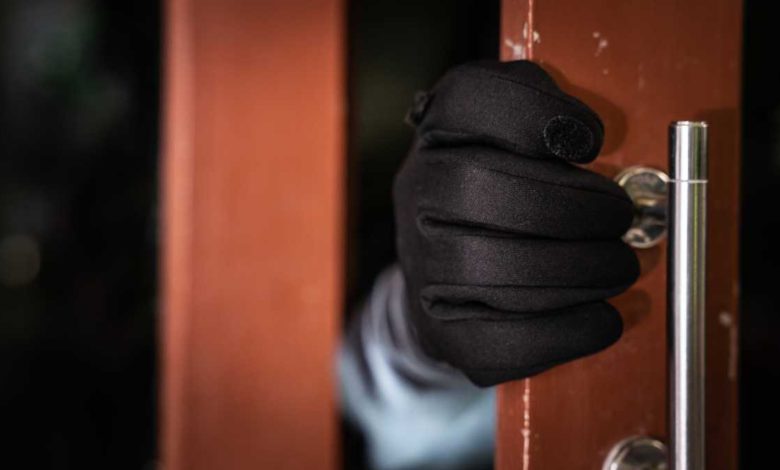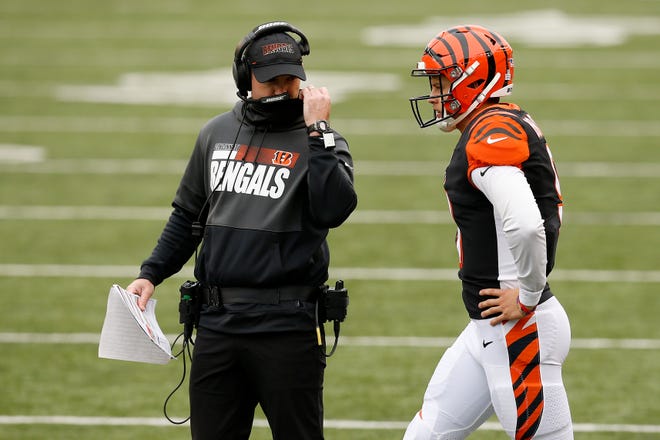

A wave of "smash-and-grab" crimes is plaguing upscale stores in major U.S. cities, with mobs of thieves making off with expensive goods in brazen, nighttime raids.At least 18 people broke into a Nordstrom department store in Los Angeles Monday night and stole thousands of dollars in merchandise, the city's police chief said. Three suspects were arrested Saturday night after a mob ransacked a Nordstrom department store in Walnut Creek, east of San Francisco. Some 80 suspects were involved, and they fled the outdoor mall in at least 10 different vehicles, police said. That robbery came after similar raids Friday night near San Francisco's Union Square, where thieves targeted Louis Vuitton, Burberry and Bloomingdale's stores, a Walgreens and cannabis dispensaries. And California isn't the only place grappling with "smash-and-grab" crimes. Fourteen robbers barged into a Louis Vuitton store in suburban Chicago last week and fled with more than $100,000 in handbags and other merchandise. So why so many recent incidents? Are they linked to the holiday season? Is it pandemic restlessness?"This has nothing to do with the pandemic," said Pete Eliadis, a former law enforcement official and founder of security company Intelligence Consulting Partners. "The pandemic is overused at this point."But security experts cited a mix of several other factors.Such cases aren't always a priority for law enforcementSan Francisco has seen a surge in crime since it reopened in the pandemic. In the Central district, for example, larceny and theft incidents are up almost 88% from a year earlier, and overall crime is up almost 52%, according to police statistics.Many of the store thieves wear masks or hoods, making them difficult to identify even when they're spotted on security cameras.Police in Los Angeles and San Francisco have made some arrests, but thieves often face few consequences, Eliadis said.One reason for this is law enforcement's lack of resources, which means theft cases sometimes are put on the back burner, he said. And, he added, the "defund the police" movement has sapped some officers' morale."There's no political will to prosecute the people in this climate. Why should a police officer waste time getting into an altercation when the person is not going to jail because it's overcrowded and a prosecutor is not going to prosecute that case because it's not high on the priority list?" Eliadis said."The takeaway is we need the political will, more prosecution and backing of law enforcement." Thieves may face few consequencesThe decriminalization of low-level offenses in some states has created opportunities for criminals to manipulate the system, said Lynda Buel, president of Ohio-based security consulting firm SRMC.For example, Proposition 47, a California ballot initiative passed in 2014, sought to alleviate prison overcrowding by reducing the penalties for some crimes. The measure raised the threshold for felony theft from $500 to $950."For the low-level criminal, the benefit far outweighs the risk, since the threshold for a misdemeanor offense is $950 — meaning that a person can steal up to that amount and only be charged with a misdemeanor," Buel said.Organized crime rings are often behind these types of "smash-and-grab" operations and pay low-level criminals to steal for them, she said.Security experts said dismantling these sophisticated crime groups must be a law enforcement priority."People see the ability to commit these 'smash-and-grab incidents' knowing that there is little consequence, especially if the thefts are kept below the threshold of a felony offense," Buel said. "It's easy, it's fast, and the payback is good."The holidays provide more opportunities for theftIt's not unusual for "smash and grabs" to increase around the Christmas holiday season, Buel said.Stores stock up before the holidays, which means there's a bounty of merchandise to pick from. That means more opportunities and more convenience for the smash-and-grabbers, she said. In Illinois, Attorney General Kwame Raoul said in September that crime rings are costing retailers across the country an estimated $45 billion in annual losses. He created a task force to crack down on organized crime rings that target stores."These brazen, violent crimes are committed by sophisticated criminal organizations that are involved in drug trafficking, human trafficking and other serious crimes," Raoul said.There are numerous places to sell stolen itemsOnce items are stolen, there are several ways to sell them — all extremely easy and with little regulation and monitoring from law enforcement, experts said. Most items grabbed in such cases have no serial numbers, making tracing them almost impossible, Eliadis said."It is incredibly easy to sell stolen merchandise online through e-commerce platforms," Buel said. "E-commerce has really taken off as the place to sell stolen goods."Other thieves don't need to sell their stolen goods on Craigslist or eBay. They can also use flea markets, pawn shops and street vendors. Thieves can sell expensive items at slashed prices, meaning there's no shortage of buyers, Eliadis added.The result is a ruthless cycle that affects everyone, Eliadis said. Some affected stores will shut down or relocate. And retailers plagued by thefts see their insurance rates and private security costs increase — costs that eventually get passed on the customer.
A wave of "smash-and-grab" crimes is plaguing upscale stores in major U.S. cities, with mobs of thieves making off with expensive goods in brazen, nighttime raids.
At least 18 people broke into a Nordstrom department store in Los Angeles Monday night and stole thousands of dollars in merchandise, the city's police chief said.
Three suspects were arrested Saturday night after a mob ransacked a Nordstrom department store in Walnut Creek, east of San Francisco. Some 80 suspects were involved, and they fled the outdoor mall in at least 10 different vehicles, police said. That robbery came after similar raids Friday night near San Francisco's Union Square, where thieves targeted Louis Vuitton, Burberry and Bloomingdale's stores, a Walgreens and cannabis dispensaries.
And California isn't the only place grappling with "smash-and-grab" crimes. Fourteen robbers barged into a Louis Vuitton store in suburban Chicago last week and fled with more than $100,000 in handbags and other merchandise.
So why so many recent incidents? Are they linked to the holiday season? Is it pandemic restlessness?
"This has nothing to do with the pandemic," said Pete Eliadis, a former law enforcement official and founder of security company Intelligence Consulting Partners. "The pandemic is overused at this point."
But security experts cited a mix of several other factors.
Such cases aren't always a priority for law enforcement
San Francisco has seen a surge in crime since it reopened in the pandemic. In the Central district, for example, larceny and theft incidents are up almost 88% from a year earlier, and overall crime is up almost 52%, according to police statistics.
Many of the store thieves wear masks or hoods, making them difficult to identify even when they're spotted on security cameras.
Police in Los Angeles and San Francisco have made some arrests, but thieves often face few consequences, Eliadis said.
One reason for this is law enforcement's lack of resources, which means theft cases sometimes are put on the back burner, he said. And, he added, the "defund the police" movement has sapped some officers' morale.
"There's no political will to prosecute the people in this climate. Why should a police officer waste time getting into an altercation when the person is not going to jail because it's overcrowded and a prosecutor is not going to prosecute that case because it's not high on the priority list?" Eliadis said.
"The takeaway is we need the political will, more prosecution and backing of law enforcement."
Thieves may face few consequences
The decriminalization of low-level offenses in some states has created opportunities for criminals to manipulate the system, said Lynda Buel, president of Ohio-based security consulting firm SRMC.
For example, Proposition 47, a California ballot initiative passed in 2014, sought to alleviate prison overcrowding by reducing the penalties for some crimes. The measure raised the threshold for felony theft from $500 to $950.
"For the low-level criminal, the benefit far outweighs the risk, since the threshold for a misdemeanor offense is $950 — meaning that a person can steal up to that amount and only be charged with a misdemeanor," Buel said.
Organized crime rings are often behind these types of "smash-and-grab" operations and pay low-level criminals to steal for them, she said.
Security experts said dismantling these sophisticated crime groups must be a law enforcement priority.
"People see the ability to commit these 'smash-and-grab incidents' knowing that there is little consequence, especially if the thefts are kept below the threshold of a felony offense," Buel said. "It's easy, it's fast, and the payback is good."
The holidays provide more opportunities for theft
It's not unusual for "smash and grabs" to increase around the Christmas holiday season, Buel said.
Stores stock up before the holidays, which means there's a bounty of merchandise to pick from. That means more opportunities and more convenience for the smash-and-grabbers, she said.
In Illinois, Attorney General Kwame Raoul said in September that crime rings are costing retailers across the country an estimated $45 billion in annual losses. He created a task force to crack down on organized crime rings that target stores.
"These brazen, violent crimes are committed by sophisticated criminal organizations that are involved in drug trafficking, human trafficking and other serious crimes," Raoul said.
There are numerous places to sell stolen items
Once items are stolen, there are several ways to sell them — all extremely easy and with little regulation and monitoring from law enforcement, experts said. Most items grabbed in such cases have no serial numbers, making tracing them almost impossible, Eliadis said.
"It is incredibly easy to sell stolen merchandise online through e-commerce platforms," Buel said. "E-commerce has really taken off as the place to sell stolen goods."
Other thieves don't need to sell their stolen goods on Craigslist or eBay. They can also use flea markets, pawn shops and street vendors. Thieves can sell expensive items at slashed prices, meaning there's no shortage of buyers, Eliadis added.
The result is a ruthless cycle that affects everyone, Eliadis said. Some affected stores will shut down or relocate. And retailers plagued by thefts see their insurance rates and private security costs increase — costs that eventually get passed on the customer.
Source link








